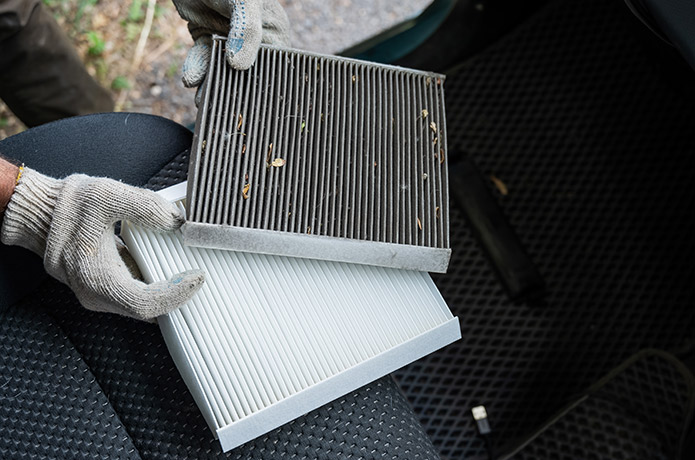Magazine
What’s a cabin filter and why do you need one?
- What is a cabin filter
- Emission zones
- What does a cabin filter do?
- Why do they need changing?
What is a cabin filter?
The air that comes into the passenger compartment of your car through its various vents –particularly if it is equipped with air conditioning (AC) – needs to pass through a high quality filter, to not only maximise the performance of the whole ventilation system, but also to protect the occupants from harmful gases and airborne pollutants. As cars are typically equipped with several filters – for the engine oil, the fuel and the air that goes into the engine – this specific filter is called a cabin filter.
Emission zones
It is usually very difficult to visually assess the level of pollution in the atmosphere. However, the subject is of major importance globally, as an increasing number of governments around the world measure air quality and many have ‘low’ or ‘ultra-low’ emission zones in and around major cities to try and reduce the amount of harmful particulates that citizens are exposed to.
Car drivers and passengers are particularly vulnerable to poor air quality as they regularly follow, or are close to, other vehicles, which are a source of several of the particulates that are included in the measurements that define air quality. However, these are not the only ones that can affect people, because there are many naturally occurring particulates, such as pollen, seeds, bacteria and dust, that are present in the air that we breathe in varying quantities throughout the year.
What does a cabin filter do?
Cabin filters are designed to reduce the level of these particulates coming into your car. They are highly effective and a good quality filter will ensure that, providing the windows are kept closed, the quality of the air inside your car is significantly higher than outside, making it safer and more hygienic.
Cabin filters are extremely effective at filtering out tiny particles of airborne pollutants such as pollen, and generally consist of what is called a first filter medium, that keeps out coarse particles, which is supported by a filter fleece that increases its dust retention capacity.
It is sometimes possible to upgrade a standard cabin filter with one that has what’s called an active carbon layer. These versions can even filter out unpleasant odours and vapours, as well as hazardous gases, such as ozone, smog and exhaust gases, while the most effective media even neutralise allergens, bacteria and fine dust, including micro-particles with diameters smaller than 2.5 mm, that’s just 0.005mm, which is naturally even more beneficial to the vehicle’s occupants.
In addition to these personal health benefits, cabin filters also help to protect the vehicle’s heating, ventilation and air conditioning system by preventing airborne particles from entering it and sticking to its internal surfaces, thereby clogging airways.
Why do they need changing?
Despite the quality of the cabin filter in your car, over time it will become less effective, because it is the barrier that stops all the dirt that would normally come into the cabin and collects it. So, just like the bag in a vacuum cleaner needs to be regularly emptied and the filter cleaned, the cabin air filter will also need to be replaced.
Due to where they are generally located, cabin filter replacement is often quite tricky to do yourself. So, as it is good to have it replaced annually, having it changed by a professional technician when you have your car serviced, is the best way to ensure you’re breathing the healthiest air possible when you and your family are travelling.

